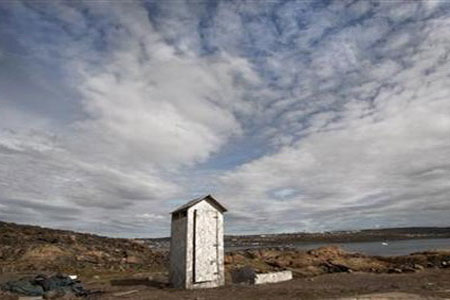The ozone layer in the Arctic declined to record
Observations by scientists over the past few months show that ozone depletion in the Arctic has reached a record, according to the World Meteorological Organization (WMO).
On April 5, WMO announced: 'Ozone depletion, the shield that protects life on earth from harmful ultraviolet rays, has reached unprecedented levels in the Arctic in the spring, because of its existence. of substances harmful to the ozone layer in the atmosphere and very cold winters in the stratosphere '.
Observations show that the ozone layer in the Arctic has declined by 40% from the beginning of winter to the end of March. Earlier, record ozone depletion at the Arctic was about 30%, occurring in the few winters within 15 years.

Photo: Reuters.
Because of this decline, regions in Northern Europe will see ultraviolet radiation levels higher than normal in the next few weeks . WMO advises people in this area to monitor the forecast for ultraviolet rays.
The ozone level in the stratosphere is a natural protective filter against harmful ultraviolet rays from the sun, which can cause sunburn, cataracts, skin cancer and physical damage. object.
According to WMO, the decline in record ozone in the Arctic occurred despite the implementation of the "very successful" Montreal Protocol, which aims to reduce production and consumption of ozone depleting substances, term as chlorofluorocarbon (CFC) .
These substances were present in refrigeration equipment, pesticides and fire fighting equipment, but were gradually phased out.
- The ozone layer only recovered after 40 years
- The Earth's ozone layer is being filled again
- Russia explains the phenomenon of the ozone layer in the Arctic
- What is the ozone layer?
- New discovery of the ozone layer gap in Antarctica
- Still need to be alert for ozone layer hole
- The hole in the Antarctic ozone layer is shrinking
- Protect the ozone layer connecting the world
- The ozone hole can be healed in 2070
- Discover the mysterious existence of ozone-killing 'environment'
- The person who discovered the ozone layer hole died
- The ozone layer is recovering after years of recession
 Van Allen's belt and evidence that the Apollo 11 mission to the Moon was myth
Van Allen's belt and evidence that the Apollo 11 mission to the Moon was myth The levels of civilization in the universe (Kardashev scale)
The levels of civilization in the universe (Kardashev scale) Today Mars, the sun and the Earth are aligned
Today Mars, the sun and the Earth are aligned The Amazon owner announced a secret plan to build a space base for thousands of people
The Amazon owner announced a secret plan to build a space base for thousands of people